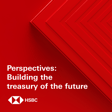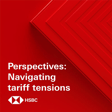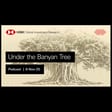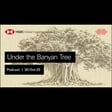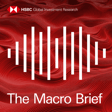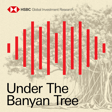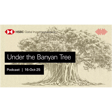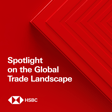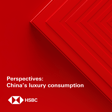Become a Creator today!Start creating today - Share your story with the world!
Start for free
00:00:00
00:00:01

SustainabilityTalks: Structured Credit & Sustainability uncovered – with Carmignac
In our latest podcast, Natalya Oram, Director, Global Sustainability Solutions, Markets & Securities Services, HSBC, discusses ESG in fixed income and collateralised loan obligations (CLOs), with Florian Viros and Imane Kabbaj of European investment manager, Carmignac.
Listen to their perspectives on ESG’s influence on credit quality and credit risk as well as its role in the growing market for CLOs. They also share insights on the outlook for CLOs in driving investment performance.
Hosted on Acast. See acast.com/privacy for more information.
Transcript
Introduction to Global Insights and Trends
00:00:00
Speaker
Welcome to HSBC Global Viewpoint, the podcast series that brings together business leaders and industry experts to explore the latest global insights, trends, and opportunities.
00:00:12
Speaker
Make sure you're subscribed to stay up to date with new episodes.
00:00:15
Speaker
Thanks for listening, and now onto today's show.
Sustainability in Investments
00:00:22
Speaker
Hi, I'm Natalia Oram from the Global Sustainability Solutions Team in HSBC's Markets and Security Services.
00:00:30
Speaker
It's a great pleasure to be joined by Florian Viros, Credit Fund Manager, and Iman Kabaj, Head of Sustainable Investing Specialists from European Investment Management Boutique, Comignac, to share their insights on their approach to sustainability and how they incorporate it into their investments.
00:00:49
Speaker
Welcome and thank you both for joining us in this MSS Sustainability Podcast Series.
00:00:53
Speaker
Thank you, Natalia.
00:00:55
Speaker
Delighted to be here.
00:00:56
Speaker
Thank you very much, Natalia.
Integrating ESG in Investment Processes
00:00:58
Speaker
So integrating sustainability into the investment process, whereby environmental, social and governance, or ESG data, is used to inform investment decisions, is a common strategy for investors with a sustainable investing mandate.
00:01:13
Speaker
HSBC's Global Research's 8th ESG Investment Survey, which was published in December 2024, revealed a continued shift to integration and engagement as the preferred approach to sustainability.
00:01:27
Speaker
with 39% of respondents to that survey saying it was the main approach.
00:01:32
Speaker
However, there is a perception that ESP integration is more prevalent for investing in publicly listed equities.
00:01:38
Speaker
But we have found that integration is actually adopted very broadly by our clients across multiple asset classes, including commodities and fixed income.
00:01:47
Speaker
Indeed, the HSBC ESG sentiment survey revealed that fixed income portfolios are increasingly using ESG integration in the investment process.
Sustainability in Fixed Income Investments
00:01:56
Speaker
With this in mind, it's great to be able to hear directly from Florian, a fund manager, and Amman from the firm's sustainability investing team on how sustainability relates to their fixed income investments, and in particular, to what has been an exciting subset of structured credit over the last few years, CLOs, or collateralized loan obligations.
00:02:17
Speaker
We will delve into CLOs in more detail later, including how it intersects with sustainability.
00:02:23
Speaker
To start off with, Iman, let's kick off with a broader question on Carminyac.
00:02:28
Speaker
As a multi-asset investor, what would you say is Carminyac's approach to sustainability?
00:02:33
Speaker
Thank you, Natalia.
00:02:35
Speaker
Well, sustainability is very much at the heart of what Carminyac does.
00:02:40
Speaker
So over 90% of our AUM
00:02:43
Speaker
is in Article 8 and Article 9 funds.
00:02:47
Speaker
So it's not about just talking the talk about sustainability, but also walking the walk.
00:02:52
Speaker
So it is very ingrained and at the heart of everything that we do.
00:02:56
Speaker
So this is the kind of the starting point for us across all of our funds.
00:03:01
Speaker
And then this is where we dive in a little bit deeper.
00:03:04
Speaker
So think about it as a kind of funnel approach, depending on what sort of product and what the client's needs are.
00:03:10
Speaker
So beyond the firm-wide exclusions, we go into other fundamental analysis.
00:03:16
Speaker
So we integrate ESG as a part of our fundamental analysis across all of our funds.
00:03:22
Speaker
And for that, we use a proprietary analysis.
00:03:24
Speaker
rating system called STARTS.
00:03:27
Speaker
Our Article 8 and our Article 9 funds commit to having a minimum of 90% of ESG rating and proprietary ESG analysis as a part of their criteria.
00:03:38
Speaker
Then we have some frameworks for positive screening and then selecting sustainable investments
00:03:44
Speaker
such as our sustainable development framework, we have our sovereign models and quite a lot of others.
00:03:49
Speaker
And then we focus quite a lot on engagement with our investee companies and then all sorts of reporting.
00:03:55
Speaker
So we have various tools that we adapt depending on the offering that we have, depending on the client requirements and then the client's needs.
00:04:03
Speaker
But this is very much applicable across everything that we do and purely integrated into our models and our funds.
00:04:11
Speaker
Thanks for
Applying Sustainability Frameworks to Portfolios
00:04:12
Speaker
that.
00:04:12
Speaker
That's interesting.
00:04:12
Speaker
And it does illustrate the fact that the perception that integration is mainly for equity investing only is definitely a misconception there.
00:04:21
Speaker
So just jumping into fixed income, how do you, when you're looking at the fixed income portfolios in particular, how does the framework adapt to these types of investments?
00:04:31
Speaker
Our fixed income range is a key part of Carmiac's offering.
00:04:35
Speaker
And as I was mentioning earlier, we have over 90% of our AUM that would have
00:04:40
Speaker
a sustainability angle to it.
00:04:42
Speaker
And that, of course, is applicable to our fixed income franchise.
00:04:46
Speaker
We have the analysis parts that I was mentioning earlier.
00:04:48
Speaker
We have a proprietary rating system.
00:04:51
Speaker
predominantly applicable to our fixed income corporate book.
00:04:54
Speaker
We also apply that to our CLOs.
00:04:57
Speaker
But then we also have a sovereign model for our sovereign exposure, both global and also EM.
00:05:05
Speaker
We have a sustainable development goal framework to select our sustainable investment.
00:05:10
Speaker
As well, we also have a framework for
00:05:12
Speaker
to assess sustainable debts.
00:05:14
Speaker
So everything, use of proceeds, green social, sustainable bonds, or SLBs as well.
00:05:19
Speaker
So that's the framework element.
00:05:22
Speaker
Now, there is a big perception shortfall about the engagement on fixed income, and it's wrongly and incorrectly only attributed to equity.
00:05:32
Speaker
to equity portfolio and equity funds.
00:05:33
Speaker
But there is quite a lot of engagements that is happening in fixed income.
00:05:37
Speaker
If you look at the SLBs, a big part of our engagement with our SLB issuers is to making sure that they're still on track with their targets, asking questions about it.
00:05:46
Speaker
So the engagement is core about what we do from integrating ESG into our fixed income models.
00:05:52
Speaker
And then finally, as with everything else, is reporting, reporting and transparency, making sure that our clients
00:05:59
Speaker
So it's a very multifaceted approach that you guys take.
00:06:06
Speaker
And so it's a very comprehensive approach to embed the sustainability into the investment process.
Challenges and Importance of ESG in Fixed Income
00:06:11
Speaker
There must be a few challenges and hurdles with all of that.
00:06:14
Speaker
So could you talk us through a little bit about that element of things?
00:06:18
Speaker
There is a huge perception shortfall on ESG integration on fixed income.
00:06:22
Speaker
Very incorrectly across the industry, there is this kind of association with ESG integration and sustainable investments for the equity books only.
00:06:32
Speaker
Whereas arguably, the fixed income markets are much larger than the equities markets.
00:06:39
Speaker
And then they represent a much bigger size of all the investment opportunities there.
00:06:44
Speaker
And we cannot just ignore that big part of the market.
00:06:48
Speaker
So for me, the main challenge is across the industry.
00:06:52
Speaker
How do we repair this perception shortfall?
00:06:55
Speaker
Because arguably, you could also say that you might have even more impact as a fixed income investor.
00:07:00
Speaker
than an equity one.
00:07:01
Speaker
I mean, there is a huge debate here, which there isn't enough time for the podcast to dive into specific investments.
00:07:08
Speaker
As a fixed income investor, if you are involved pre-issuance level, then this is where you can
00:07:15
Speaker
actually have a very meaningful impact.
00:07:17
Speaker
In terms of analysis, the E, the S and the G, and especially the G factor within the fundamental analysis in fixed income definitely carries a lot of weight as well.
00:07:27
Speaker
In the fixed income, you have the opportunity to really dedicate a portion of your investments to a specific project via the use of proceeds or SLB as well.
00:07:37
Speaker
So it's definitely a very powerful tool, but I think it's really underrepresented
00:07:43
Speaker
in the sphere and then in the industry.
00:07:45
Speaker
And this is the perception for that we need to be addressing.
00:07:48
Speaker
So for me, that's the main challenge that we're facing as practitioners.
00:07:52
Speaker
If I were to say one message across those challenges is don't underestimate ESG and fixed income.
00:07:58
Speaker
It's definitely more powerful than it appears to be.
00:08:01
Speaker
Thank you.
00:08:01
Speaker
I think that's a really strong message there about the meaningful influence of sustainability when you've
00:08:07
Speaker
apply it to fixed income investing, particularly at that pre-issuance
Integrating Sustainability Across Investments
00:08:10
Speaker
phase.
00:08:11
Speaker
So maybe just taking a closer look at that, if we look at more of your complex investments, such as derivatives and structured credit, and I mentioned CLOs earlier, are there any sort of extra steps in the investment process with the sustainability angle?
00:08:27
Speaker
We don't really look at sustainability in a very reductive way just to meet any regulatory requirements, albeit this is very important.
00:08:35
Speaker
For us, it's how do we fully integrate that into our investment process?
00:08:40
Speaker
And then we run some diversified, flexible portfolios as well and funds.
00:08:45
Speaker
So for us, the integration needs to go beyond the standard equity look or corporate bonds.
00:08:54
Speaker
And our portfolio is made
00:08:56
Speaker
of various asset classes and depending on what the strategy is like, but it's like the whole suite.
00:09:02
Speaker
And for us, we try to adapt our framework to that whole suite because otherwise the analysis is not going to be a true reflection of the state or what the outcome or the exposure of the portfolio is.
00:09:14
Speaker
Thank you very much for that description.
00:09:16
Speaker
It's very comprehensive in terms of your approach to sustainability.
00:09:20
Speaker
I think it's a really good time for us to hear from investment professional
00:09:24
Speaker
dedicated portfolio manager.
00:09:26
Speaker
Florian, you know, you manage the firm's credit portfolios.
00:09:30
Speaker
It's a great opportunity to ask you directly, you know, what is your approach to sustainability when you're looking at new investments, so on the opportunity side, and then also managing your existing portfolios and the existing positions in that portfolio.
00:09:44
Speaker
For us, ESG is not a box-taking exercise.
00:09:48
Speaker
So we don't rate assets or score assets from an ESG perspective because they go in an Article 8 fund, for instance.
00:09:57
Speaker
What we do is that we rate systematically.
00:10:00
Speaker
all credit assets that we buy for ESG, even if that asset will end up in a non Article 8 fund, for instance.
00:10:09
Speaker
And that process rating process, ESG rating process is fully embedded into the investment process.
00:10:16
Speaker
because at the end of the day, ESG impacts credit quality, credit risk.
00:10:22
Speaker
So we need to understand what the ESG pressure points are because it can increase the credit risk of an issuer, at least it can influence the credit risk of an influence one way or another, and therefore it's fully embedded into the investment process.
00:10:37
Speaker
Obviously, we benefit from the support
00:10:39
Speaker
of our sustainability team to engage with issuers to understand certain ESG risk.
00:10:46
Speaker
But ultimately, it is a responsibility of the investment team to assess and assign a rating with regards to ESG metrics.
00:10:55
Speaker
Thanks, Florian.
00:10:56
Speaker
As we've heard from you and from Iman now, adopting that integrated approach to sustainability means it's considered for all types of fixed income investments across the whole portfolio,
00:11:06
Speaker
you mentioned, not just from traditional bonds and loans, but to structured credit and more of the complex instruments as well.
Growth in CLO Market and ESG Integration
00:11:15
Speaker
So returning to an area that we've kind of mentioned, especially the acronym earlier, CLOs.
00:11:20
Speaker
CLO issuance has enjoyed really strong growth recently, hitting a record in 2024 with north of $200 billion issued in the US and close to 50 billion euros issued in Europe.
00:11:32
Speaker
And as CLOs are a growing asset class, and we've been building up our own capabilities in the space, I thought it would be a really interesting time to jump in here and take a closer look at this subset asset class in a little bit more detail.
00:11:44
Speaker
So maybe to start with, for those of us that are not specialists like yourself, what is a CLO?
00:11:50
Speaker
The CLO, collateralized loan obligation, is a form of securitization where the underlying assets are corporate loans, which are predominantly issued in the context of sponsor-led leveraged buyouts.
00:12:05
Speaker
So it means the underlying credit risk in the CLO is comprised of diversified corporate credit risk across a range of sectors and geographies.
00:12:16
Speaker
So very diversified risk.
00:12:19
Speaker
And as you said, the CLO market has grown significantly in recent years.
00:12:24
Speaker
And today, the total size in Europe of the CLO market is about 250 billion, which is quite substantial.
00:12:32
Speaker
And so CLOs are effectively an important financing tool for corporates in a very wide range of industries.
00:12:40
Speaker
Okay, thank you.
00:12:41
Speaker
And that's a really interesting sort of summary of what a CLO is and also the size of the market in Europe in particular.
00:12:48
Speaker
Would you be able to describe why you think it's been such a strong growth
00:12:53
Speaker
area of the market and whether it's been a big driver of performance for fixed income investors in general.
00:13:01
Speaker
It's interesting to look a bit at the history of the asset class.
00:13:05
Speaker
CLOs in Europe have been in existence for a long time, for approximately 25 years.
00:13:10
Speaker
So CLOs were issued pre-crisis, pre-2008 crisis.
00:13:15
Speaker
CLOs have performed very well through the 2008 crisis relative to many different structured credit segments, the bad acronyms, the CDOs of ABS or subprime RMBS in the US.
00:13:29
Speaker
And so CLOs have been somewhat associated with these other structured products, but the performance in terms of fundamental credit performance and capital losses have been very, very small, very small relative to these segments, but also relative to corporate credit in general, traditional corporate bonds in general.
00:13:51
Speaker
And so the market after the 2008 crisis
00:13:55
Speaker
The CLO market in Europe shut down between 2008 and early 2013.
00:14:02
Speaker
And why did the market restart in 2013?
00:14:05
Speaker
Because investors actually realized that the asset class has performed very well.
00:14:11
Speaker
So the asset class has now a long standing park record, which is very good.
00:14:16
Speaker
So I think that has helped give investors comfort to allocate capital to the asset class.
00:14:22
Speaker
Then there is the question of need for financing for the private equity industry.
00:14:27
Speaker
It's also a growing industry.
00:14:29
Speaker
It's a very active market.
00:14:32
Speaker
And when private equity funds acquire a company, they need that as part of the acquisition.
00:14:40
Speaker
And CLOs have become today one of the very, very important tools.
00:14:45
Speaker
to provide that financing to acquire company so it's natural that with the growth of private equity the clo market has grown as well and then there's the demand from investors the investor base in cielos is very broad and diverse in the sense that
00:15:03
Speaker
in cielo debt cielo capital structure you want you have banks insurance companies asset managers specialized asset managers hedge funds so a very diverse group of investors which are also driving demand for the product we started investing in cielo since uh in 2015 so we
00:15:26
Speaker
We've been invested in the asset class for more than 10 years.
00:15:29
Speaker
Why?
00:15:30
Speaker
It brings naturally performance, can enhance the terms of our funds, but also brings diversification to our funds.
00:15:38
Speaker
And it's an asset class that is not so easy to access.
00:15:42
Speaker
You need specific expertise, you need size, you need a mandate, regulatory approval.
00:15:50
Speaker
It's not as readily investable as traditional corporate bonds, for instance.
00:15:55
Speaker
Thanks, Florian.
00:15:55
Speaker
That's a great overview of the CLO market and the factors driving demand and growth, not just recently, but in the last 10 years, as you described.
00:16:05
Speaker
So bringing sustainability back to the conversation, how would you say, if at all, sustainability has influenced the development of the CLO market?
Impact of SFDR on CLOs
00:16:15
Speaker
I would say hugely.
00:16:16
Speaker
I think what has been a turning point for the CLO market has been in the first half of 2021 with the introduction of SFDR, where the overwhelming majority of European CLOs, new issue CLOs,
00:16:32
Speaker
have incorporated ESG criteria in the documentation of the CLO, in the prospectus of the CLO, in the form of investment restrictions.
00:16:41
Speaker
That is not to say that before 2021, there were no restrictions in place.
00:16:46
Speaker
In fact, there were many CLOs that already had embraced sustainability into their documentation.
00:16:53
Speaker
At the CLO collateral manager level, the underlying assets of the CLOs are managed by a collateral manager.
00:17:00
Speaker
which may itself have internal explicit sustainability standards, which will then feed through into the CLOs they manage.
00:17:12
Speaker
I would say before 2021, a lot of CLOs had some form of ESG language in the documentation.
00:17:20
Speaker
After 2021, it has become, I would say, nearly systematic.
00:17:24
Speaker
On top of that, you have some CLO managers
00:17:28
Speaker
that are pursuing a similar approach, frankly, as the one we have for our credit investments, which is basically assigning an ESG rating, an ESG score, to all the underlying assets that can be purchased by the CLO.
00:17:46
Speaker
So it means you have not only the negative screening, but also an active ESG rating of the underlying assets.
00:17:54
Speaker
So I see that it's becoming a lot more commonplace for a CLO documentation to have this ESG sustainability language and T-side.
00:18:03
Speaker
Do you have any case studies to share of how this engagement between CLO investor and CLO manager on ESG or sustainability really had an interesting impact on
00:18:14
Speaker
the documentation on the deal itself, so to speak.
00:18:17
Speaker
So what is a bit particular in the CLO market that we, I would say, rarely see in tradable fixed income markets is that in the course of the syndication, investors can review the documentation of the CLO and can provide comments on the documentation on ESG, not only on key terms of the transaction.
00:18:39
Speaker
We've always been very...
00:18:41
Speaker
diligent in terms of reviewing CLO documentations, providing comments on the documentation, on credit terms, on kind of a wide range of topics that matter to us.
00:18:54
Speaker
And so ESG would naturally fall within that framework.
00:18:59
Speaker
So we would comment on ESG the same way we would comment on the credit terms.
00:19:04
Speaker
Thank you,
Outlook for the CLO Market
00:19:05
Speaker
Florian.
00:19:05
Speaker
And, you know, looking ahead at the market, coming off a record year for issuance,
00:19:11
Speaker
What's your outlook for CLOs this year?
00:19:13
Speaker
Will we see similar growth?
00:19:15
Speaker
Will it still be interesting for all those different types of investors you mentioned earlier, from banks down to insurance companies, asset managers, hedge funds?
00:19:23
Speaker
Will everyone still be looking here for investment opportunities in your view?
00:19:28
Speaker
It's very hard, obviously, to make predictions over one year.
00:19:30
Speaker
But what I can say today about the current state of the market, the demand for CLO is very strong.
00:19:37
Speaker
One could argue it's not surprising because it's the beginning of the year, but the demand has been strong going into the end of last year as well.
00:19:45
Speaker
On the ability for issuers to place CLOs, I think the demand is there.
00:19:53
Speaker
The bigger question in terms of new issue supply now in the coming weeks, months, is the supply of loan assets, of corporate loan assets.
00:20:05
Speaker
It doesn't make sense to issue CLOs or financing vehicles if you cannot deploy the financing that you've raised.
00:20:13
Speaker
It's very much linked to the M&A activity, for instance, that we will see from private equity sponsors.
00:20:21
Speaker
And that is a very fluid situation.
00:20:23
Speaker
There are encouraging signs that the M&A activity, which has been somewhat sluggish at the end of last year and early this year, but some encouraging signs that that activity will pick up.
00:20:36
Speaker
And across your whole fixed income portfolio, I know you said it's difficult to predict where the market will be, but in terms of where you and your team are focusing on, what are the key investment themes you see for the year in your space in fixed income overall?
00:20:51
Speaker
I would say that in terms of investment philosophy, why do we invest in CLOs?
00:20:56
Speaker
Why have we been investing in CLOs for the past 10 years?
00:21:00
Speaker
Generally, our mandates are quite flexible.
00:21:03
Speaker
What we try to identify are assets that we feel are offering a very good remuneration for the risk that we are taking.
00:21:12
Speaker
I would say other themes, we've been very active in financials, financial bonds.
00:21:20
Speaker
And I would say generally idiosyncratic opportunities.
00:21:24
Speaker
So it sounds a bit like a catch-all, but it's basically precisely these situations where we try to find outsized risk premium, whatever the reason may be.
00:21:33
Speaker
Maybe because people don't understand or other participants don't understand the situation or don't have simply the capital available for it.
00:21:42
Speaker
And so with the flexible nature of our mandate, we're able to see these opportunities
00:21:47
Speaker
Thank you, Florin.
00:21:48
Speaker
That's a really interesting explanation of how you can use this as a tool to maximize returns and generate returns for the risks that you're taking.
00:21:56
Speaker
It sounds like also 2025 is going to be a very busy year for you and your team, not just looking at the CLOs, which you expect to come to the market, but across the whole portfolio, across all the different instruments.
Closing and Subscription Encouragement
00:22:08
Speaker
So thank you for sharing your insight.
00:22:10
Speaker
Thank you both for joining us.
00:22:11
Speaker
Thank you for having us.
00:22:12
Speaker
Thank you.
00:22:13
Speaker
Thank you for joining us at HSBC Global Viewpoint.
00:22:17
Speaker
We hope you enjoyed the discussion.
00:22:19
Speaker
Make sure you're subscribed to stay up to date with new episodes.
